Contents
GLOSSARY
Buddha
One who is enlightened to the eternal truth of life and is able to lead others to attain the same enlightenment. One who possesses the Three Virtues of Sovereign, Teacher, and Parent.
Butsudan
The altar in which the Gohonzon is enshrined.
Butsugu A general term for the Buddhist accessories used to make offerings to the Gohonzon in front of the Butsudan. They include the candlesticks, evergreen vases, incense burner, water cup, bell, rice cup, etc.
Dai-Gohonzon
The fundamental object of worship in Nichiren Shoshu. It was inscribed by Nichiren Daishonin on October 12, 1279. It was the purpose of His advent into this world as the True Buddha. All Gohonzons of Nichiren Shoshu are derived from the Dai-Gohonzon of the High Sanctuary of the Essential Teachings.
Daimoku
Supreme Invocation or Nam-Myoho-Renge-Kyo. This expression also indicates the chanting of Nam-Myoho-Renge-Kyo.
Daishonin
Literally, “Great Sage.” It is the title given to Nichiren. It indicates The True Buddha.
Gohonzon
The object of worship in Nichiren Shoshu. Go is an honorific prefix in Japanese. Honzon means object of worship. All Gohonzons in Nichiren Shoshu are transcriptions of the Dai-Gohonzon made by the successive High Priests of Nichiren Shoshu. The Gohonzon is the manifestation of the eternally enlightened life of the True Buddha, Nichiren Daishonin (the Person), and Nam-Myoho-Renge-Kyo of actual ichinen sanzen (the Law) to which the True Buddha is eternally enlightened, the oneness of the Person and the Law.
Gokaihi
The audience with the Dai-Gohonzon. The ceremony to worship the Dai-Gohonzon in the Hoando at Head Temple Taisekiji.
Gongyo
Literally assiduous practice. Recitation of a portion of the second (Hoben) and all of the 16th (Juryo) Chapters of the Lotus Sutra with silent prayers. Performed twice daily. Gosho The writings of the True Buddha, Nichiren Daishonin. They take the form of treatises, the letters He wrote to His disciples, and oral lectures written down by His successor, Second High Priest Nikko Shonin.
Hoando Enshrinement Hall
The Temple Building at Head Temple, Taisekiji where the Dai-Gohonzon of the True High Sanctuary is enshrined and where the Gokaihi Ceremony is conducted.
Heritage of the Law (Kechimyaku)
The lifeblood transmission of True Buddhism. The Heritage of the Entity of the Law is the face to face transmission to a single person of the lifeblood and entrustment of Nichiren Daishonin’s True Buddhism from Nichiren Daishonin, to Nikko Shonin (Second High Priest) to Nichimoku Shonin (Third High Priest) down to the present High Priest in an unbroken succession. All those who uphold this heritage and sincerely follow the High Priest, who has inherited the Heritage of the Law, will thereby be within the Heritage of Faith.
Hokkeko
Translated as “Lotus Group.” The community of lay believers of Nichiren Shoshu. The name “Hokkeko” was given to the lay believers by Nichiren Daishonin Himself.
Ichinen Sanzen
“Three thousand realms are possessed by a single life moment.” The theory that explains that all existence possesses the Buddha nature along with all the other conditions of life. This is elucidated by teaching that there are ten states of life or mind, called the “Ten Worlds.” Furthermore, the principle of the mutual possession of the ten worlds makes this 100 worlds. They are manifested through the principle of the Ten Factors and the Three Realms of Existence, which make 3,000 worlds.
Karma
Internal causes residing in the depths of life that manifest themselves as conspicuous effects when external causes or conditions are encountered. All people possess both positive and negative karma. The practice of True Buddhism implants tremendous good karma (fortune) in one’s life, and lessens one’s retribution for negative karma from causes made in this and previous lifetimes.
Kosen-rufu
Means to widely declare and spread True Buddhism. There are two aspects of Kosen-rufu. “Kosen-rufu of the Entity of the Law” signifies the establishment of the Dai-Gohonzon by the True Buddha, Nichiren Daishonin. His will to us was to accomplish the “Kosen-rufu of Substantiation” which signifies the time when all the people of the world embrace the Daishonin’s Buddhism and revere the Dai-Gohonzon. At this time, there will be true world peace and the masses of people around the world will attain Buddhahood.
Kuon Ganjo
Time and space without beginning or end. In many cases it is used to indicate the eternal past and indicates the eternity of the enlightenment of the True Buddha, Nichiren Daishonin.
Lotus Sutra
Shakyamuni’s highest teaching. It was his final teaching, preached during the last eight years of his life together with the Sutra of Infinite Meaning, an introduction to the Lotus Sutra, and the Nirvana Sutra, the teaching for the sake of propagating the teachings of the Lotus Sutra. In it, Shakyamuni expounded the ultimate truth of his enlightenment. However, in the Latter Day of the Law, we can only benefit from the Lotus Sutra when it is viewed through the life of the True Buddha, Nichiren Daishonin. Therefore, as Nichiren Shoshu believers, we practice and study the Lotus Sutra based exclusively on the interpretations and teachings of the True Buddha, Nichiren Daishonin, and the successive High Priests of Nichiren Shoshu. In His writings, Nichiren Daishonin sometimes uses the term Lotus Sutra to indicate Nam-Myoho-Renge-Kyo, or the Gohonzon.
Nichikan Shonin (1665–1726)
The Twenty-sixth High Priest of Nichiren Shoshu. He wrote many important doctrinal treatises including exegeses on the five major writings of Nichiren Daishonin and the Six Volume Writings (Rokkan Sho).
Nichimoku Shonin (1260–1333)
The Third High Priest of Nichiren Shoshu. He became a disciple of Nikko Shonin in 1274, and in 1276 went to Mt. Minobu where He was ordained by Nichiren Daishonin. He served the Daishonin for the remainder of the Daishonin’s life, and also served Second High Priest Nikko Shonin. He succeeded Nikko Shonin as the Third High Priest of Nichiren Shoshu. He is remembered as a great and courageous debater who remonstrated with the Kamakura Government and the Imperial court many times.
Nichiren Daishonin
The True Buddha of Kuon Ganjo. The founder of True Buddhism, Nichiren Shoshu. He is the True Buddha who is eternally endowed with the Three Enlightened Properties, and who eternally possesses the Three Virtues of Sovereign, Teacher and Parent. He fulfilled the purpose of His advent into this world by inscribing the DaiGohonzon of the True High Sanctuary on October 12, 1279 so that all the people of the Latter Day of the Law (Mappo) can eradicate their evil karma and attain Buddhahood. He was born on February 16, 1222 and physically passed away on October 13, 1282.
Nichiren Shoshu
Orthodox Denomination of Nichiren. The only denomination that has inherited and propagates the complete True Teachings of Nichiren Daishonin.
Nichiu Shonin (1409–1482)
The Ninth High Priest of Nichiren Shoshu. During his tenure as High Priest there was widespread warfare in Japan. Despite this, he traveled extensively for the sake of propagation and converted many people to Nichiren Shoshu. He authored the very significant writing, “On Formalities” (Kegi Sho) which delineates the observances of Nichiren Shoshu.
Nikko Shonin (1246–1333)
The direct successor to Nichiren Daishonin and the Second High Priest of Nichiren Shoshu. From 1258 when he first met the Daishonin until the Daishonin’s passing, he was constantly at his master’s side, serving the True Buddha. He founded the Head Temple, Taisekiji, in October of 1290.
Shakubuku (literally “widely declare and spread”)
Propagation of Nichiren Shoshu Buddhism. The process of introducing people to True Buddhism, and helping them overcome their attachment to provisional teachings by refuting incorrect views and heretical religions.
Shakyamuni
The historical founder of Buddhism who lived approximately 3,000 years ago. Chinese and Japanese tradition set the date of his birth on April 8, 1029 B.C. and his death on February 15, 949 B.C. He was born in what is present day Nepal as a prince, the son of King Shuddhodana of the Shakya tribe. According to Buddhist tradition, at the age of nineteen he renounced his princely life, and started his journey as a religious ascetic seeking the truth. At the age of 30, having realized that the severe austerities of ascetic life in India did not lead to an awakening to the ultimate truth, he sat under a pipal tree (also known as the “Bodhi Tree”) and meditated. He attained enlightenment and embarked on a lifelong career of traveling through India, preaching to many disciples and believers to lead them to the same enlightenment.
During the last eight years of his life he expounded the teachings of the “Lotus-Nirvana Period,” in which he taught the principles of the Lotus Sutra, his highest teaching, and instructions for its transmission. Shakyamuni’s teachings in the Lotus Sutra ultimately reveal in the depths of the passages that his status was provisional, and that the True Buddha of Kuon Ganjo would appear in Mappo to reveal the Buddhism of the True Cause that would lead all humankind to enlightenment.
Shodai
“Chanting Daimoku.” A Japanese term which means the practice of chanting Nam-Myoho-Renge-Kyo.
Shoten Zenjin
Protective Deities or “Buddhist Gods” which function to protect those who embrace the Gohonzon and uphold the teachings of True Buddhism.
Taisekiji
The Head Temple of Nichiren Shoshu. It is located in Japan at the foot of Mt. Fuji in Fujinomiya City, Shizuoka Prefecture. In the “Document for Entrusting the Law which Nichiren Propagated throughout His Life” ( Nichiren Ichigo Guho Fuzoku Sho), Nichiren Daishonin directed that the High Sanctuary of True Buddhism be erected at the foot of Mt. Fuji. In 1290, Nikko Shonin, the Daishonin’s direct successor, founded Taisekiji. The land was donated by Nanjo Tokimitsu, a great lay patron of Nichiren Shoshu. Taisekiji is where the Dai-Gohonzon is enshrined, and where the High Priest lives. Nichiren Shoshu believers from all over the world come on pilgrimage to Taisekiji to pray to the Dai-Gohonzon and to participate in Ushitora Gongyo with the High Priest.
Three Great Secret Laws
The principles which constitute the core and foundation of Nichiren Shoshu Buddhism. They are the True Object of Worship, the True High Sanctuary, and the True Invocation.
The True Object of Worship is the Dai-Gohonzon, inscribed by Nichiren Daishonin on October 12,1279. Within the Dai-Gohonzon are the Person and the Law. The Person is the eternal enlightened life of the True Buddha, Nichiren Daishonin. The Law is NamMyoho-Renge-Kyo to which the Daishonin is eternally enlightened.
The True High Sanctuary is the place where the Dai-Gohonzon will be enshrined at the time of Kosen-rufu so that all the people in the world can eradicate their negative karma and attain enlightenment. At the present time It is enshrined in the Hoando Enshrinement Hall at the Nichiren Shoshu Head Temple, Taisekiji. In a general sense, it also signifies the place where the Gohonzon is enshrined in local Temples and believers’ homes.
The True Invocation is Nam-Myoho-Renge-Kyo. Nichiren Daishonin established the True Invocation by chanting Nam-Myoho-Renge-Kyo for the first time on April 28, 1253. The True Invocation carries the significance of both faith and practice.
Three Periods of Propagation
The three time periods following the passing of Shakyamuni. The first 1000 year period after Shakyamuni’s passing is called the Former Day of the Law (Shobo).The second 1000 year period is called the Middle Day of the Law (Zobo). The final period, starting thereafter, is called the Latter Day of the Law (Mappo). Shakyamuni taught that the Latter Day of the Law would last 10,000 years and more, into the future. He taught that at this time, because the people would have no connection to Shakyamuni, they could no longer gain any benefit from his teachings. The True Buddha, Nichiren Daishonin, appeared at the beginning of the Latter Day of the Law and established the Buddhism of the Three Great Secret Laws so that all people could attain enlightenment now and on into the future.
Three Treasures
The Three Treasures are what all Buddhists revere as the most precious treasures in the Universe. They are the Buddha, the Law, and the Priesthood. The Buddha is one who is enlightened to the eternal truth of life and the universe and possesses the three virtues of Sovereign, Teacher, and Parent. The Law is the teaching that the Buddha teaches through his own enlightenment. The Priesthood signifies the disciples of the Buddha who inherit, protect, and transmit the teachings to future generations. In Nichiren Shoshu the Buddha is Nichiren Daishonin, the eternal True Buddha of the Latter Day of the Law. The Law is the Dai-Gohonzon of the True High Sanctuary of True Buddhism, and the Priesthood is Nikko Shonin, the Second High Priest, who directly received the transmission of True Buddhism, and all of the successive High Priests of Nichiren Shoshu who have received this face to face transmission in an unbroken succession for over 750 years.
Tozan
The pilgrimage to Nichiren Shoshu Head Temple, Taisekiji, to have an audience with the Dai Gohonzon. Literally translates as “to climb the mountain.”
True Buddhism
The Buddhism of Nichiren Shoshu, the one and only true denomination of Nichiren Daishonin’s Buddhism.
Ushitora Gongyo
The Gongyo conducted by the successive High Priests of Nichiren Shoshu for the sake of attaining Kosen-rufu. It is conducted around 2:30 AM each morning in the Reception Hall, and has been a tradition of Taisekiji since its founding.
Yohaijo
The place in the Reception Hall from which the High Priest offers His prayers to the Dai Gohonzon for Kosen-rufu during Ushitora Gongyo. It is located to the left of the main altar of the Reception Hall and has the complete offerings of candles, evergreens, and incense.
REFERENCES
Dai Nichiren
Dai Nichiren; edited by the Dai Nichiren Committee; monthly magazine (Fujinomiya City, Shizuoka Prefecture, Japan: Nichiren Shoshu Head Temple Taisekiji)
Gosho
Heisei Shinpen Nichiren Daishonin Gosho; edited by Abe Nikken Shonin, 67th High Priest of Nichiren Shoshu. (Fujinomiya City, Shizuoka Prefecture, Japan: Nichiren Shoshu Head Temple Taisekiji, 1994)
Kaiketsu
Myoho-Renge-Kyo Narabi Ni Kaiketsu;edited by Abe Nikken Shonin, 67th High Priest of Nichiren Shoshu (Fujinomiya City, Shizuoka Prefecture, Japan: Nichiren Shoshu Head Temple Taisekiji, 1998)
Mondan
Nichikan Shonin Mondan Shu (Collection of the Exegeses of Nichikan Shonin); edited by Abe Nikken Shonin, 67th High Priest of Nichiren Shoshu. (Tokyo: Seikyo Shimbun-sha)
MW
The Major Writings of Nichiren Daishonin; edited and translated by the Gosho Translation Committee. (Tokyo: Nichiren Shoshu International Center, Seven Volumes, 1979-1994)
Rekidai
Rekidai Hossu Zensho (Collection of the Writings of the Successive High Priests); edited by Hosoi Nittatsu Shonin, 66th High Priest of Nichiren Shoshu. (Fujinomiya City, Shizuoka Prefecture, Japan: Nichiren Shoshu Head Temple, Taisekiji, 1972)
Seiten
Nichiren Shoshu Seiten (The Sacred Writings of Nichiren Shoshu); edited by Horigome Nichijun Shonin, 65th High Priest of Nichiren Shoshu. (Fujinomiya City, Shizuoka Prefecture, Japan: Seiten Publishing Committee, 1952)
Shintei Gosho
Showa Shintei Nichiren Daishonin Gosho; edited by Hosoi Nittatsu Shonin, 66th High Priest of Nichiren Shoshu. (Fujinomiya City, Shizuoka Prefecture, Japan: Nichiren Shoshu Head Temple Taisekiji, 1966)
Yoshu
Fuji Shugaku Yoshu (Collection of Study Essentials for the Fuji School); edited by Hori Nichiko Shonin, 59th High Priest of Nichiren Shoshu. (Tokyo: Seikyo Shimbun-sha) 131132 Nichiren Shoshu Basics of Practice
NOTES
1. The Three Great Secret Laws: The principles which constitute the core and foundation of Nichiren Shoshu Buddhism. They are the True Object of Worship, the True High Sanctuary, and the True Invocation. The True Object of Worship is the Dai-Gohonzon, inscribed by Nichiren Daishonin on October 12, 1279. Within the Dai-Gohonzon are the Person and the Law. The Person is the eternal enlightened life of the True Buddha, Nichiren Daishonin. The Law is Nam-Myoho-Renge-Kyo to which the Daishonin is eternally enlightened. The True High Sanctuary is the place where the Dai-Gohonzon will be enshrined at the time of Kosen-rufu so that all humankind can eradicate its negative karma and attain enlightenment. At the present time, it is enshrined in the Hoando Enshrinement Hall at the Nichiren Shoshu Head Temple, Taisekiji. In a general sense, it also signifies the place where the Gohonzon is enshrined in local temples and believers’ homes. The True Invocation is Nam-Myoho-Renge-Kyo. Nichiren Daishonin established the True Invocation by chanting Nam-Myoho-Renge-Kyo for the first time on April 28, 1253. The True Invocation carries the significance of both faith and practice.
2. This refers to the story in the Nirvana Sutra of the monk Kakutoku and King Utoku. The monk Kakutoku upheld the True Law and was persecuted severely. King Utoku supported Kakutoku and was killed while defending him. Kakutoku was reborn as Kasho Buddha, and King Utoku was reborn as Shakyamuni.
3. In His writings, Sandai-hiho sho and Ichigo guho sho, Nichiren Daishonin left the establishment of the Actual True High Sanctuary as His Will for future generations. According to these writings, this Buddhism will definitely spread throughout the world. At that time, not only great numbers of everyday people, but also emperors and kings, will take faith in this Buddhism.
4. Honmonji roughly translates as “Temple of the Essential Teachings.”
5. The services listed here are the ceremonies held at the Head Temple. At each local Temple, the services and ceremonies are also conducted in conformity with the above dates. In the United States, some local temples celebrate the ceremonies on the closest Sunday to the actual ceremony date.
6. Ko, as a general term, is a ceremony in which believers offer praise and gratitude to the religion’s object of worship and to its founder. The Sutra is recited, prayers are offered, and a lecture about the teaching or a passage from the Sutra or the Gosho is preached. 1

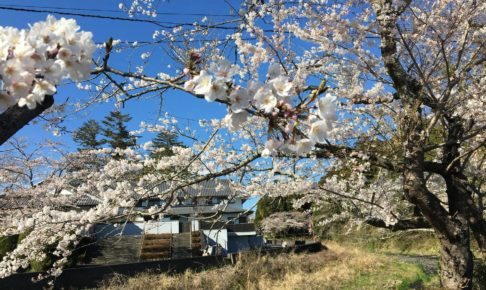




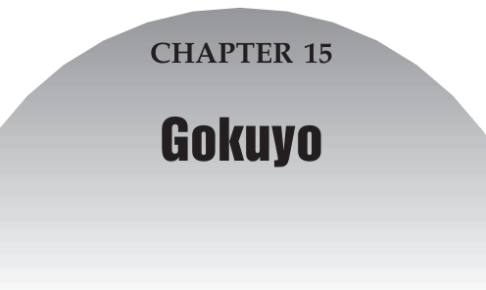
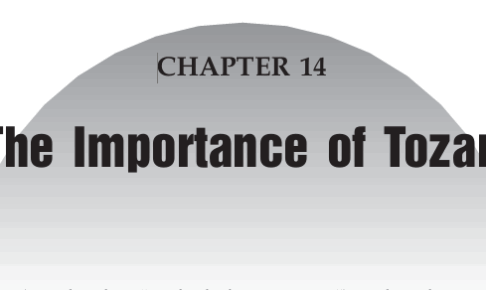
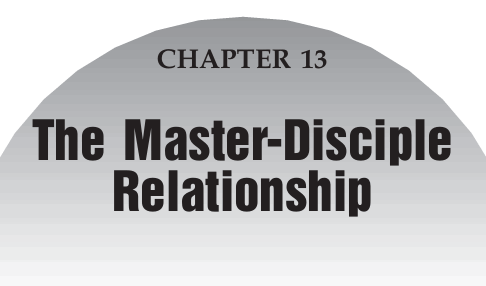

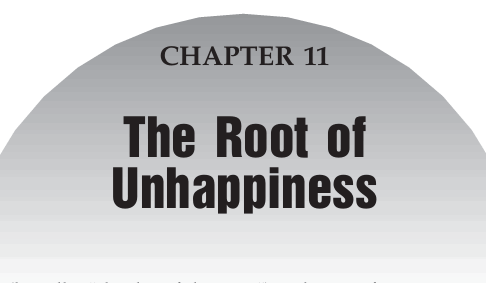

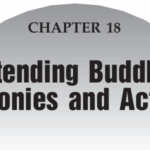

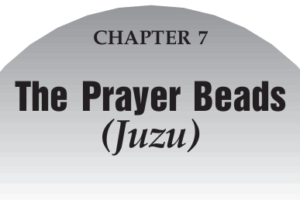
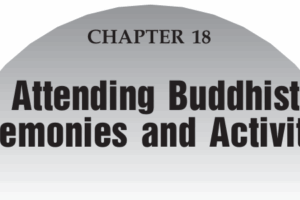
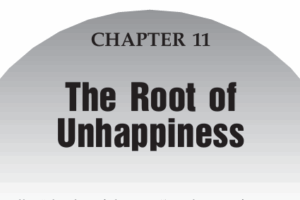
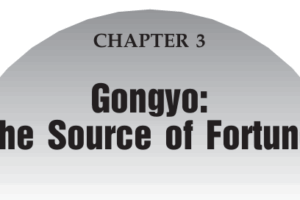
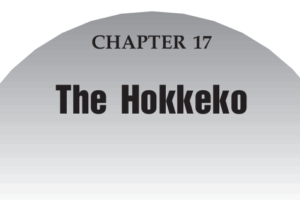
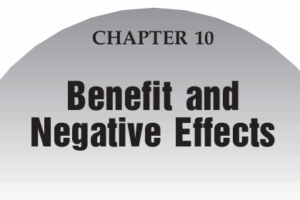

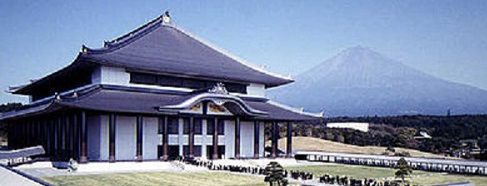
最近のコメント